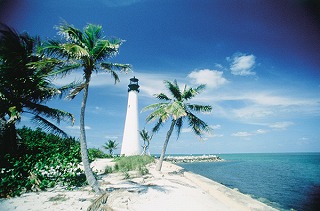Speech by Consul General Eiichi Kawahara
Remarks by Eiichi Kawahara, Consul General of Japan in Miami, on the one hundredth anniversary of Japanese Sakura gift to the US at UWF
下呂市派遣団ご一行、日本の皆様、ようこそおいで下さいました。
It is my great honor and joy to participate in this ceremony with you all for the celebration of the 100th anniversary of the Cherry Trees Gift to the United States.
Last month, while attending International Days in Tallahassee, I had the chance to talk with Mr. Gray Swoope, Florida Secretary of Commerce and President of Enterprise Florida, who told me with joy that his daughter had been chosen as the Princess of Sakura in the State of Mississippi, and that she would later go to Washington, D.C. for this year’s Sakura festival, which just started last week and carries on for a total of 5 weeks.
The centenary celebration and the gift itself symbolize the lasting friendship between the United States and Japan as close allies. This closeness and friendship of us was confirmed last year on March 11th when an unprecedented massive earthquake & Tsunami stroke Northeast Japan. Immediately after the disaster happened, United States forces stationed in Japan and in its vicinity rushed to the disaster area, and conducted rescue and relief operation for over a month. From U.S., NPOs and experts in various fields also visited Japan to help our recovery efforts in the affected areas. Here in Florida, the first call of sympathy and solidarity to Japan that I received was from Governor Scott.
I now wish to express here my sincere appreciation to those people who kindly support and participate in this program for the first centenary anniversary of the cherry blossom tree gift. I thank the President of UWF, the Pensacola Bay area community and all the participating companies and individuals, in particular, the citizens of Gero City for their sponsorship and support.
I would like to commend an outstanding Japanese lady who has long been here to teach Japanese language and culture to university students: Dr. Shigeko Honda. She also served as executive director for the U.S.-Japan Society in Northwest Florida between 1994 and 2010, and she has been the director of the “Japan House” at the University of West Florida since 2004. Japan House was built in traditional Japanese style, using beautifully cut woods from Gifu Prefecture of Central Japan, where Gero City is located.
Pensacola City receives junior high school students from Gero City every year. Pensacola reciprocated by sending its students. Gero City has sent this year another group of junior high school students. The dispatch has been 19th missions from Gero city. First mission was sent to Pensacola in 1994. On this first centenary cerebration of the Sakura gift to U.S., the citizens of Gero have donated more than 50 sakura trees to be planted in Pensacola. This gift from Gero citizens is another good example of ever deepening and growing friendship between the two cities.
Also, here in Pensacola there is a Japanese affiliated company called “Hitachi Cable,” which backed by a staff of 300 Floridians, is successful in manufacturing brake hoses for vehicles in the US.
Going back to the Great East Japan Earthquake, it certainly caused great structural damage in the Northeast part of Japan and enormous loss of life. But the rest of Japan was only briefly disrupted, and was back to normality within weeks after March 11th. Now, in its reconstruction process, Japan intends to develop a future oriented community, called smart city or model of future city, by transitioning to a green economy that achieves economic growth in a way compatible with the environment. You can now enjoy, just as before, Tokyo’s business centers and modern architecture, museums, fashion and great shopping. Japan is also rich with history, culture and traditions, and it has many World Heritage Sites all over its territory. The “Old Japan” is intact.
Finally, I now have a special role to invite Gero city junior high school student up to the stage to deliver their message followed by song chorus performance. Please welcome the Gero City students.
|
| © Consulate-General of Japan in Miami | 80 SW 8th St., Suite 3200 Miami, Florida 33130 (305) 530-9090 |
